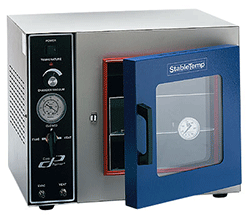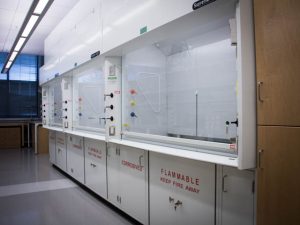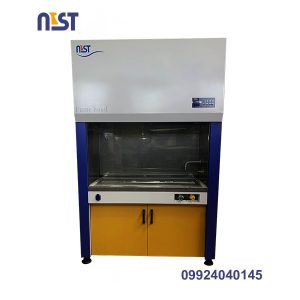- تاریخ انتشار: 5 شهریور 1401

A Muffler stove furnace is a heating device designed to heat a variety of materials to a certain temperature. The main feature of this furnace is the so-called existence. The muffler protects the processed material and the main working space of the furnace is the muffler.
Types of Muffler stove:
Average temperature: 100-500 degrees Celsius
Average temperature: 400-900 degrees Celsius
High temperature: 900-1400 degrees Celsius
Ultra high temperatures: 1400-1650°C (2000°C)
By type of heating:
Electric ovens
Gas furnaces
With protective processing mode:
Air: Heating in air (general purpose)
With a protective gas atmosphere: heating in a special gas environment (hydrogen, argon, helium, nitrogen, reducing gases, nitrogen gases, etc.)
Vacuum: heating in vacuum
Based on design:
vertical loading (pot)
Bell type (by separating from the furnace)
horizontal loading (simple)
Tubular (thermocouple approval)
These furnaces are most widely used in the industry as a means of heat treatment (heating, sintering, calcination, annealing, etc.). These direct furnaces are electric furnaces with silencers installed in the working space, usually ceramic.
These furnaces, unlike chamber furnaces of other types, have disadvantages that actively reduce their possible areas of application. Throttle heating elements, ie. Their location behind the ceramic silencer does not allow the use of these electric furnaces at temperatures above 1100 degrees Celsius. This is due to the need to increase the temperature of the heating elements above the permissible temperature level of their use. To reduce the possibility of temperature transfer between the temperature inside the muffler, e.g. The temperature of the working space and the heating element, the Muffler stove is made of ceramic, which has a high value of thermal conductivity and therefore a high density. A serious disadvantage of high-density muffler is its low resistance to heat. The concept of thermal resistance of the muffler determines the allowable amount of heating and the number of thermal cycles (heating-cooling) it can withstand before degradation. Therefore, these furnaces do not allow them to perform high-speed heat treatment modes, do not allow metal heat treatment in them with the need to unload (load) the material from (in) a heated furnace, which is done by opening The door is included. or cover
In terms of thermal efficiency, these furnaces differ from other types of thermal units because they require additional energy consumption to heat the muffler itself, which has a significant mass and thus requires a long-term thermal process.
At the same time, it should be noted that the definite need to eliminate the direct radiation of heaters on heat-treated materials can be achieved not by using a huge muffler, but by placing heating elements inside ceramic tubes in the working space. realized To some extent, it eliminates the above disadvantages of these furnaces.
Heating furnaces produced with silencers made of fibrous materials with heaters formed inside them are free from the disadvantages of electric furnaces with high density silencers determined by the level of thermal resistance. At the same time, placing the heater in a layer of heat-insulating fibrous material reduces the efficiency of the heating elements. One of the serious drawbacks of the fiber muffle is the low resistance of the fibers in the presence of gases from the materials being processed due to the resulting chemical interaction with the muffle material, such processes are especially active during the firing of glazed ceramics. release of salt), during calcination of flasks (wearing of wax residues), during heat treatment of metals (wearing of oil).
Therefore, it is reasonable to use these furnaces for working in oxidizing environment (air) with small muffler sizes, when the heater muffler with ceramic tubes leads to a significant reduction in workload and output Gas does not exist from existing matter. processed.
The most widely used furnaces are in heat treatment processes of materials in protective environments (carbon dioxide, hydrogen, nitrogen, etc.). This design of electric furnaces makes it possible to provide an oxidizing environment outside the muffler, where the heating elements are located, thereby increasing the useful life of the heaters and the furnace in general.
The main areas of using muffler furnaces:
Heat treatment of metals (hardening, annealing, tempering, normalizing)
melting metals
Baking ceramic products
cremation
to burn
assay analysis (coupling)
dry







دیدگاه شما